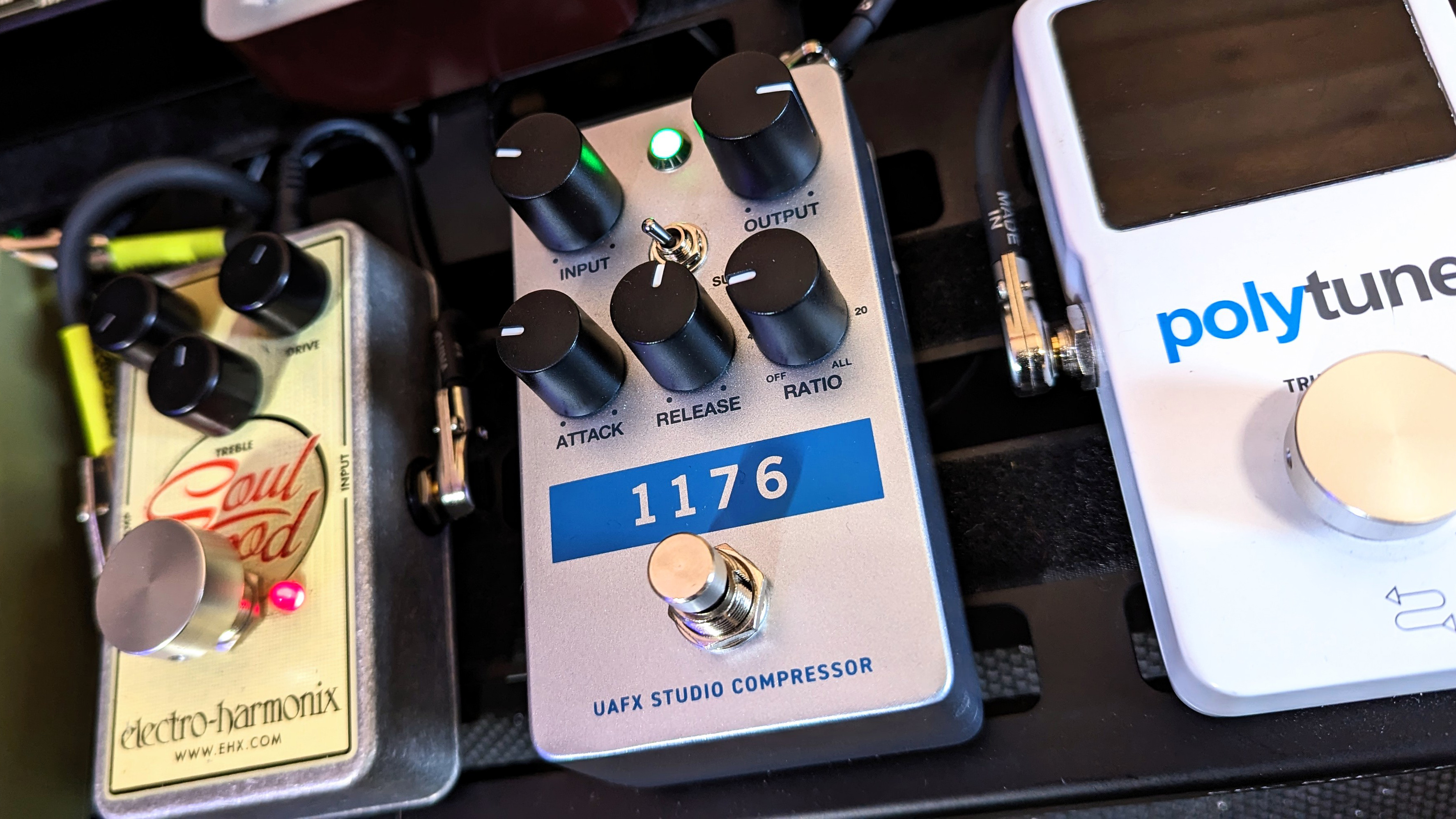MusicRadar Verdict
The UAFX 1176 delivers on its simple but significant mission statement: a trusted pro studio compressor with wide usability delivered in a compact pedal. It could soon become a fixture in the signal chain that you won’t want to turn off.
Pros
- +
The versatility of the iconic 1176 in a pedal
- +
Parallel and stacked modes take that design further
- +
The three easy-access modes work well on a pedal
Cons
- -
If you want the flexibility of the LA-2A as well, get the Max
MusicRadar's got your back
Universal Audio UAFX 1176 Studio Compressor Pedal: What is it?
The latest wave of Universal Audio pedals offers a new form factor but a sense of deja vu; a lot of these algorithms and therefore sounds can be found in the previous wave, specifically from the Del-Verb and Max Preamp & Dual Compressor. But the aim seems to be one of choice; focussed, more compact delay, reverb and compression pedals at a more accessible price compared to the larger pedals for those that want that. And this compressor pedal might be the most compelling of the foursome with the widest potential appeal.
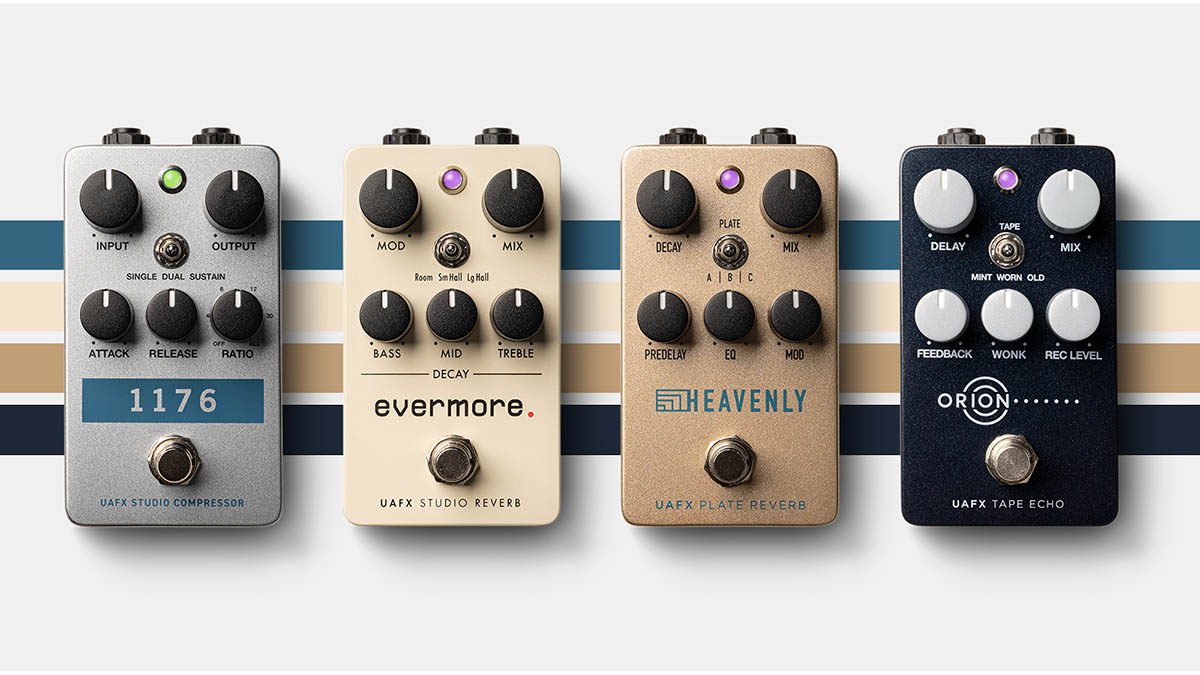
The proposition is compelling enough on paper, but it's also simple to achieve for the compact. Universal Audio – creators of the 1176 compressor – bring their acclaimed plugin emulation of the studio unit to a digital pedal. While the Max combined this with two other compressors and UA’s 610 valve preamp emulation and it was undoubtedly impressive, it was a lot of compression and preamp options for some players get their heads around; especially for those who primarily want grab-and-go, always-on compression. A single-pedal option capturing the 1176 makes perfect sense then, especially as other companies have made hay with their own, pricier takes on the 1176. But why is it desirable over the wealth of other compression options out there?
The 1176 has been a go-to for studio engineers since 1967 and on a pedalboard it can offer sustain and funk-friendly dynamics, but it’s also a very good option for subtler always-on enhancement when dialled in specific ways. UA has also brought the useful options of parallel compression, and even stacked compression, at the touch of a switch. The question is whether this adds up to being worth a $200 investment for guitarists.
Universal Audio UAFX 1176 Studio Compressor Pedal: Performance and verdict
The answer isn't a simple universal 'yes' for all players; because the 1176 is often used as a post-recording limiter, not within the guitar signal chain itself. But there is an appeal to the latter, and this is actually the most affordable option out there that captures the 1176 – and surely no better provider than straight from the source. The caveat is there’s a bit of a learning curve for anyone new to the 1176, even if you have owned other compressor pedals, but it’s worth leaning into. Once you do this, the 1176 can double as a boost with drive options, further underlining the versatility.
The 20 to 800 microseconds attack time range of the 1176 offers a lot of scope for your playing dynamics, but for some guitarists the idea of a digital compressor with one emulation over an analogue pedal with FET circuitry – like that offered by the closest equivalent $419 Origin Cali76 Stacked – may be offputting. We say the proof is in the sounds. And the case here is compelling.
It’s a great tool for adding body and sustain and really useful for those of us who need that for the realistic volumes we play at home with
The Single, Dual and Sustain modes are a smart move to make things accessible. First, we try an always-on enhancer / clean boost setup with the parallel switch on and allowing a blend of dry and compressed guitar signal for an even subtler compression touch. You can't alter the blend though – it's set. From there I set the compression character ratio to 4:1 (the lowest setting up from off), input fairly low to remove peaks only, attack slow (barely on) and fast release (set to max). It’s a great tool for adding body and sustain and really useful for those of us who need that for the realistic volumes we play at home with. It's especially useful for beefing up single-coil pickups without losing their character.
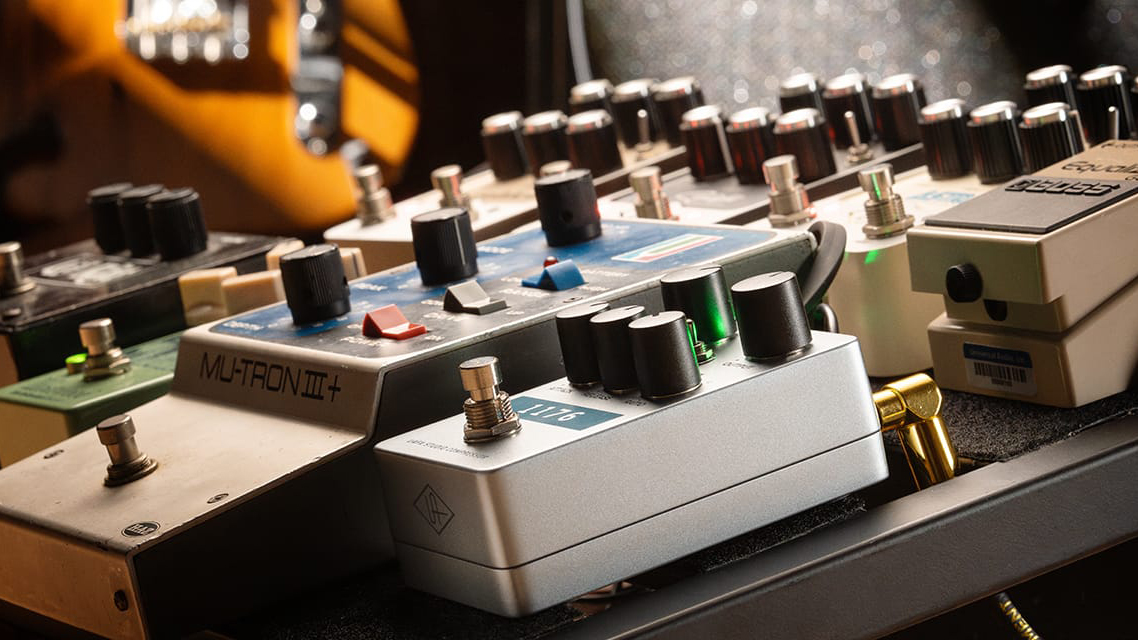
In Single mode it's a traditional 1176, but switch into Dual mode and turn up the input and the real grit begins to be revealed – it's essentially an overdrive mode. This is the sound of two stacked 1176s in series (the first driving the second into distortion) and can be pushed from mild drive into fuzzy Led Zeppelin Black Dog territory – which is exactly what Page used. It's a nice thing to have, though I doubt many would buy a compressor pedal for it, I actually really like it as a fuzz alternative at the more extreme setting as it can bite and also give that direct-to-desk character. Dialled back it thickens things nicely too.
Sustain mode is two stacked 1176s again aimed for a rounder sound for sustaining slide work with compression and without the distortion. UA also describes it as a 'Lowell George' slide-friendly go-to and they're not wrong.
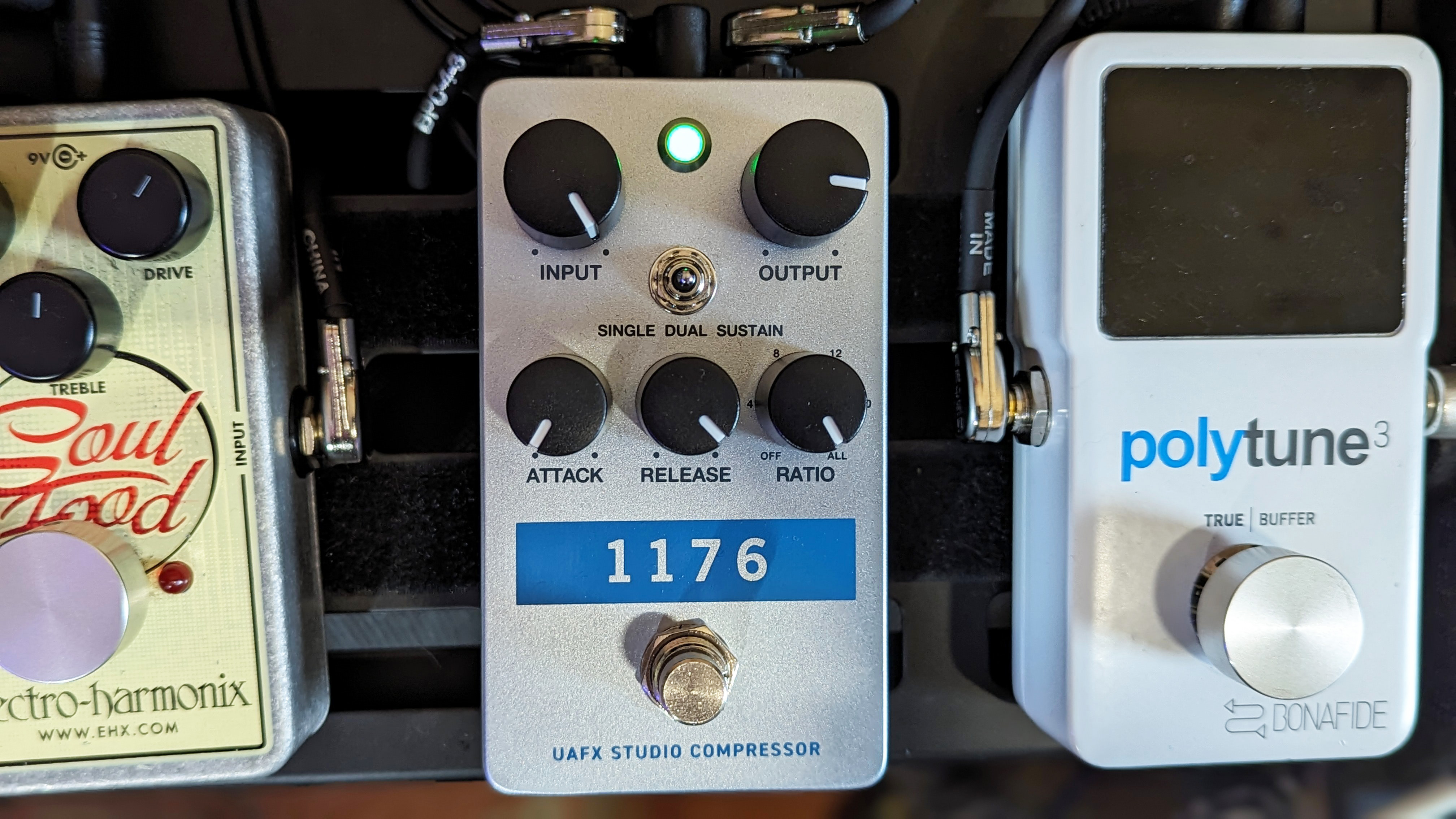
It’s a hugely versatile compressor with these modes providing an easier startpoint to adjust on-the-fly. There’s also a true and buffered bypass switch - the UAFX Control Bluetooth mobile app is not required or designed to be used here on a self-sufficient unit.
It being an 1176 plugin in a pedal, the instrument applications go beyond guitar if you want it to. Moreover, it can be a core part of your guitar and bass signal path; its quick attack and lower ratio settings aren't necessarily huge tonal shifts but can bring out more presence and movement in the note attack and release for feel of your playing. Then turning the 1176 off makes you realise how much it brings to your clean foundation tone. Such is the unsung hero role of a good compressor – and this one is great.
MusicRadar verdict: The UAFX 1176 delivers on its simple but significant mission statement: a trusted pro studio compressor with wide usability delivered in a compact pedal. It could soon become a fixture in the signal chain that you won’t want to turn off.
Universal Audio UAFX 1176 Studio Compressor Pedal: Hands-on demos
Universal Audio
Steve Sterlacci
Philip Conrad
Mark Hopkins
Universal Audio UAFX 1176 Studio Compressor Pedal: Specifications
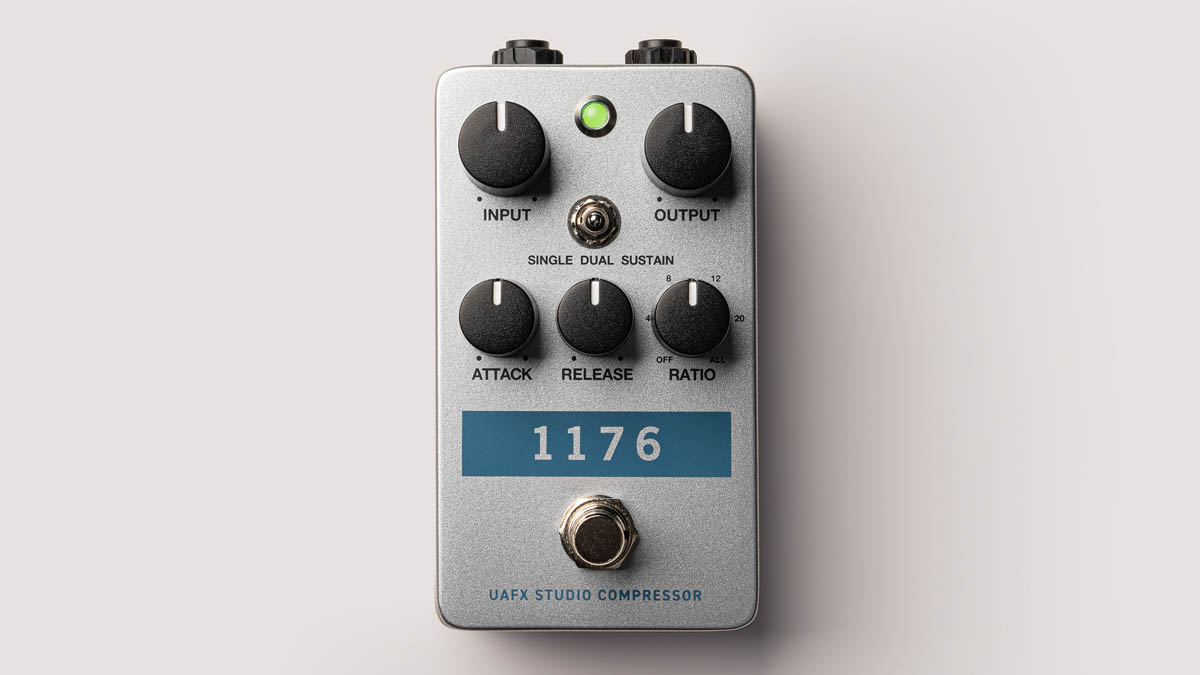
- TYPE: Studio compression pedal
- CONTROLS: Input, Output, Single / Dual / Sustain mode mini toggle, Attack, Release, Ratio, bypass footswitch, Bypass Buffer / True switch, Parallel dry-though off and on
- FEATURES: Single, stacked and parallel compression
- POWER: 9V DC pedalboard isolated power supply (250mA power draw)
- CONTACT: Universal Audio

Rob is the Reviews Editor for GuitarWorld.com and MusicRadar guitars, so spends most of his waking hours (and beyond) thinking about and trying the latest gear while making sure our reviews team is giving you thorough and honest tests of it. He's worked for guitar mags and sites as a writer and editor for nearly 20 years but still winces at the thought of restringing anything with a Floyd Rose.
“I used everything I knew about music”: How Green Day exceeded expectations with their most ambitious song
YouTube just added AI tools that makes musicians, library music and video editors redundant
“Every one of them said yes without hesitation": Hank Marvin and Roger Taylor have just remade a '60s classic for charity
